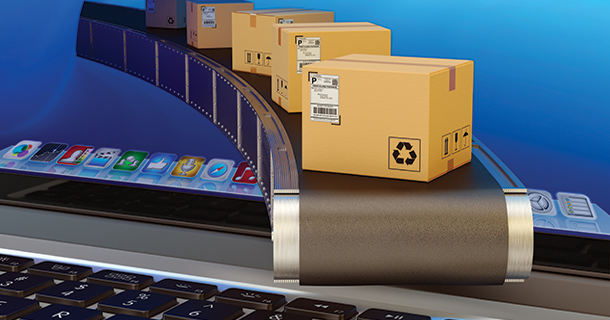Charleston, S.C.-based Greystar is the largest apartment operator and multifamily property manager in the United States, with over 400,000 units under management in 160 different markets. The purchasing line item to keep those units and their communities running at tip-top condition? Approximately $450 million annually, says Greystar Senior Managing Director of Advantage Solutions Gardner Reese.
That’s close to half a billion dollars in purchasing every year, providing Greystar with serious pricing power when it comes to negotiating with vendors for paint, carpet, light bulbs, appliances, and more. “We are proud to offer our clients the ability to take advantage of our purchasing power to drive prices of necessary products and services to rock bottom levels,” says Reese.
Never the sexiest line item when it comes to multifamily apartment operations, purchasing and procurement nevertheless represents one of the largest annual spends—and consequently one of the largest cost savings opportunities—for portfolio owners and managers from coast to coast.
In fact, repair and maintenance costs annually represent $685 per unit at master-metered properties ($487 at individually-metered properties), according to the 2016 National Apartment Association Survey of Operating Income and Expenses. That’s more than marketing and administrative costs combined, and trails only salaries and taxes as the largest expense facing apartment operations teams.
Driven by the seasonal turnover of leases, repair and refurbishment, and regular preventative maintenance (or lack thereof), the buying and installing of stuff has benefitted significantly from mobile-optimized online marketplaces from the industry’s leading technology providers. These systems provide portfolio managers of all sizes similar pricing power and discounting available to behemoth firms like Greystar. Linked to property management systems (PMS), procurement technologies also offer users cost forecasting and analytics tools as well as track and report on non-compliant, maverick spending that can jeopardize the bottom line.
Penny pinchers
Overwhelmingly, the bulk of these purchases center around two primary product categories. “Carpet and paint, carpet and paint, carpet and paint,” explains Brian Zrimsek, chief product officer for Cleveland, Ohio-based MRI Software. “When we’re are talking about procurement, we are talking about maintenance purchasing. Sure, there may be some office supplies requested by the leasing team, but the vast majority of product is delivered to the maintenance professional, and the vast majority of it is carpet and paint.”
Zrimsek’s observation hones in on the primary property event that triggers purchasing in the first place: make-ready repairs and refurbishments for unit turns. The NAA Survey of Operating Income and Expenses pegs average turnover at 53 percent—and with the average number of units in the NAA study hovering around 250, that equates to roughly one turn every three days. Using technology to optimize purchasing for the constant churn of rentable units, particularly in a high-rent environment, has become job number one for multifamily purchasing professionals.
“We have both proprietary and vendor-provided tools that allow us to track every penny,” says Janet Ham, vice president of IT for Atlanta-based Post Properties. “We’re laser focused on every dollar we spend to the point that we don’t just look at our spending and procurement data every day, we look at it throughout the day.”
Most purchasing and procurement software—including systems from MRI, Carrollton, Texas-based RealPage and Santa Barbara, Calif.-based Yardi—utilize online catalogs that can be customized by both buyer and seller to provide maintenance and asset managers with one-click purchasing of appropriate replacement products at negotiated pricing. By purchasing in larger volumes and centralizing the bulk of purchasing through a single platform, owners can quickly realize deep volume discounts on literally thousands of products.
“When I first started in multifamily, I think the catalogs might have included a couple of hundred vendors,” says Sara Jones, vice president of OpsSolutions at RealPage. “Now there are literally thousands of vendors that owners can establish purchasing relationships with and incorporate into community-specific purchasing catalogs.” Indeed, in June 2016, RealPage acquired eSupply Systems for $7.1 million, expanding the company’s eProcurement platform by an additional 10,000 vendors.
Inventory, mobilized
Procurement technology in and of itself has helped a growing number of product providers connect with multifamily ops purchasers. With most portfolio managers handling a blend of garden and mid-rise properties built in various decades from the 70s to today, centralized purchasing makes much more sense than centralized inventory-keeping for maintenance professionals.
“Even with all of the carpet and paint, you’re still talking about highly localized and differentiated properties that all have different needs from a product standpoint, so centralized inventory does not hold significant value,” says Zrimsek.
While leasing professionals mostly got first crack at the technology designed for smart phones and tablets, procurement systems likewise created for mobile platforms have seen widespread adoption among operations professionals, most of whom were less likely to be found behind a desktop computer than front-end property management professionals.
In some instances, the advancement has been so rapid that many purchasing professionals have migrated from manual ordering to mobile-based ordering with little intermediary purchasing via an online, desk-top based platform. “We see almost a whole generation of buyers that have gone straight to app or tablet,” says Yardi Procure to Pay business development manager Akshai Rao. “Operations folks are often managing several properties, so the aspect of mobility is exceedingly important, and feeds a desire to move from a very manual and cumbersome process of calling and faxing info back and forth to allow real time purchasing on a mobile device.”
Greystar is looking to push the boundaries of mobile purchasing even further, and is currently in the process of evaluating technologies that include software integration with core PMS and enterprise resource planning (ERP) platforms as well as device management.
“We believe providing our team members in operations and maintenance with mobile devices will increase their efficiency in the field allowing them to act on, report on and close work orders without the need to return to home base in order to access the job on a computer,” explains Reese. “We also believe this will increase their ability to document both the needs and the completion of work done by attaching photos and files while closing the work order as opposed to having to transfer data from device to computer.”
Ham agrees, and reports that Post even provides iPad minis to key maintenance and purchasing staff to enable an untethered, mobile working environment for all things procurement, including working unit turn tickets, closing them, and otherwise processing orders through the ticket for repairs in real time versus coming back to the office and spending an hour doing data entry. “It’s a form factor that has been very effective at offering a real time approach,” Ham says. “It’s very impactful.”
Minimizing the mavericks
While all of these developments are designed to provide flexibility to the purchasing manager to make procurement more efficient, the goal of centralized purchasing nevertheless remains a bulk volume at discount price equation. As such, procurement software also focuses on compliance and the effort to avoid so-called rogue or maverick spending by maintenance professionals who—for various reasons—opt to buy product elsewhere.
“Compliance involves not only verifying that property owners receive the negotiated price for meeting their volume purchasing agreements, but providing those managers with insight into maverick purchasing when it occurs,” says Jones.
Both Ham and Reese say some level of maverick spending is to be expected at properties where keeping operations running efficiently is paramount to establishing unwavering purchasing rules. “You have to train your team to understand that purchasing plays a key role in the financial performance of a property,” Ham says. “Set policies for what you can and can’t do with a purchasing card or emergency funds. Because we are so focused on the cost at a very granular level, especially with make-readys, we know pretty quickly when someone has gone beyond their spend level.”
At the end of the day, a property has to keep running, and procurement technologies have helped property owners and managers find the best proportion of centralized versus rogue spending where and when it needs to occur. “There are times when you simply need that appliance, or need that widget,” says Rao, who adds that most procurement professionals aim to keep non-compliant spending between 20 and 10 percent of all purchases. “When that gets down to 50-50 it might be time to reconsider why non-compliant spending is occurring.”
And low costs per se don’t always have to be the ultimate deciding factor for where spend is occurring, experts say. “Part of the whole procurement strategy is supplier optimization,” Ham concluded. “We want to make sure that we have selected vendor partners that have provided us with the best products and services, hopefully at the best price we can get, but that doesn’t always mean it comes cheap, because ‘You get what you pay for’ remains a true statement in this world.”
Disruption by delivery
While procurement technologies from multifamily vendors including MRI, RealPage and Yardi have helped purchasing professionals consolidate portfolio buying power to realize product discounts, non-compliant “maverick” spending still occurs with regularity. Personal relationships and free donuts at the local hardware store are one reason why, and also speak to a core concept behind non-compliant purchasing: the perceived value of convenience.
With major product and logistics firms like Amazon.com, UPS and even Home Depot exploring technologies including 3D printing, driverless delivery vehicles, or even drone deliveries of products, are tried-and true procurement platforms in danger of disruption?
“We’re not so sure about driverless trucks coming onto operating properties but drone delivery for an emergency order? Super cool, I think we’d love that,” says Post Properties vice president of IT Janet Ham.
Yardi Procure to Pay business development manager Akshai Rao agrees that driverless vehicles are likely still a decade away from visiting multifamily job sites, but argues that contracted courier services from major regional distributors like Amazon are a here and now reality. “Same day delivery when I want my product ASAP and I don’t want my staff leaving the property could hold some significant value and is worth watching,” Rao says.
Even further out there is the prospect of products that replace or repair themselves, offers Sara Jones, vice president of OpsSolutions at RealPage. “Self-healing building materials are starting to gain some attention,” Jones says. “And when you start talking about products and materials that can repair themselves without human intervention, I think that’s when you’re looking at real disruption in how we select and purchase things for communities.”














